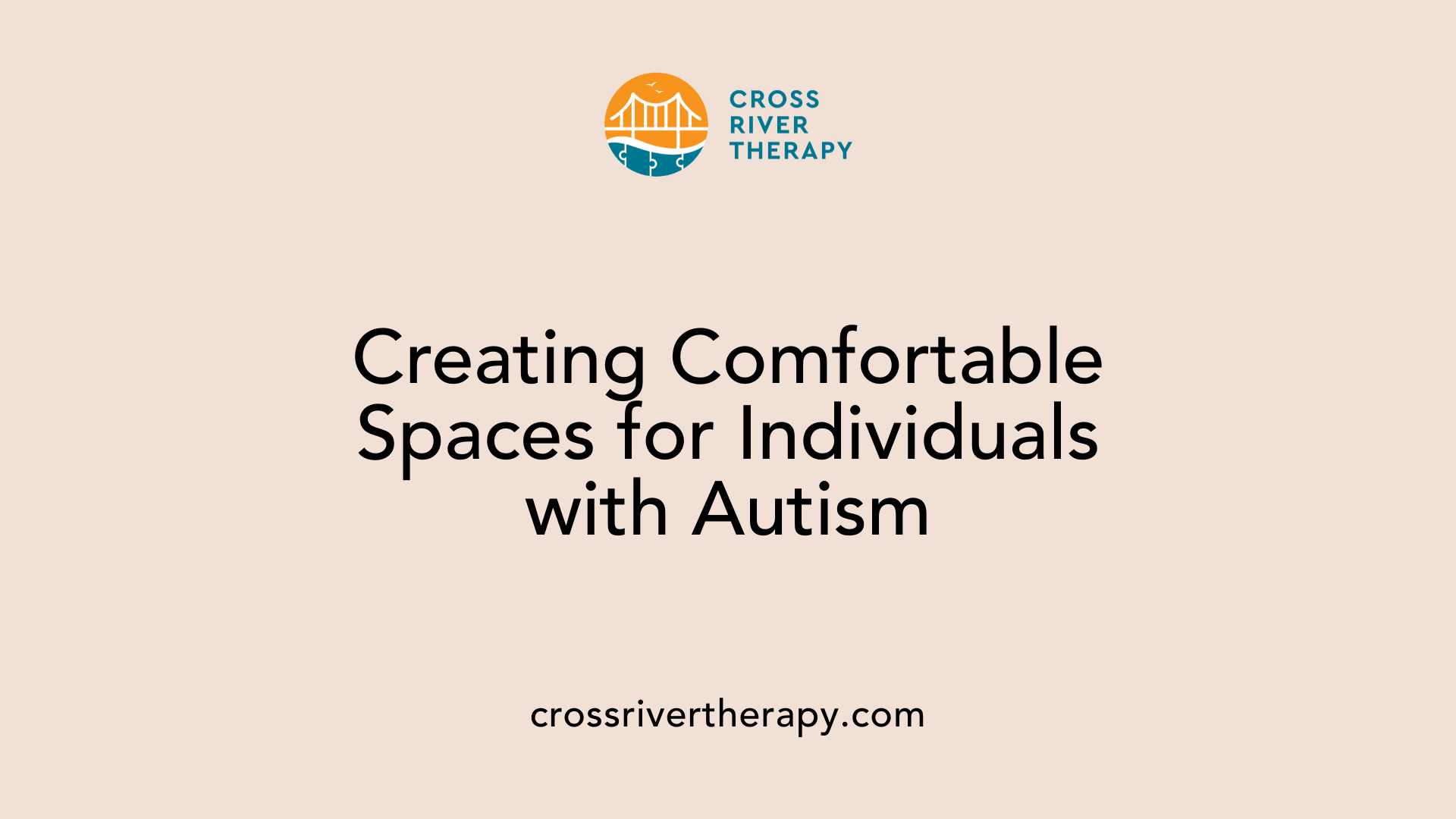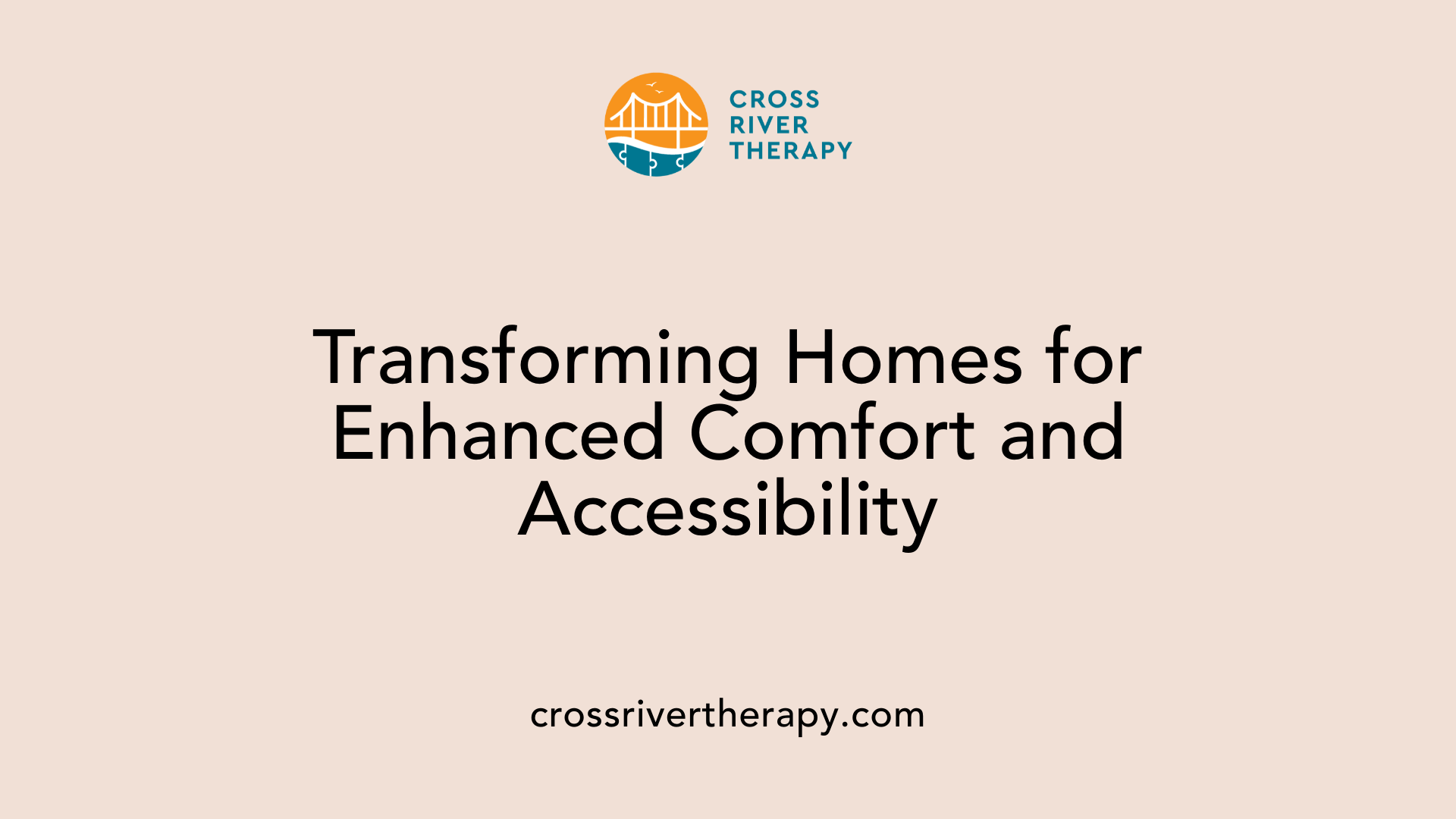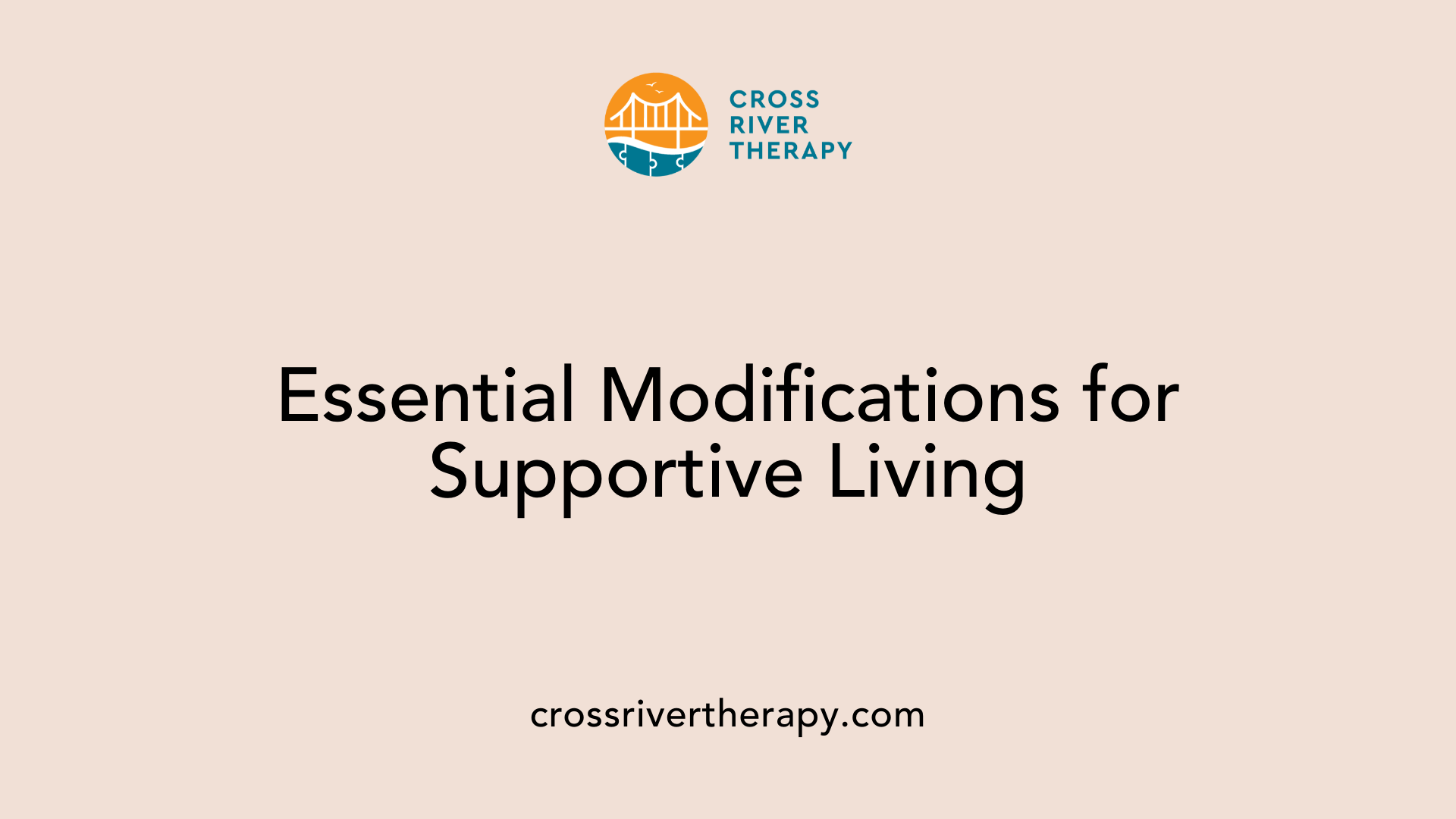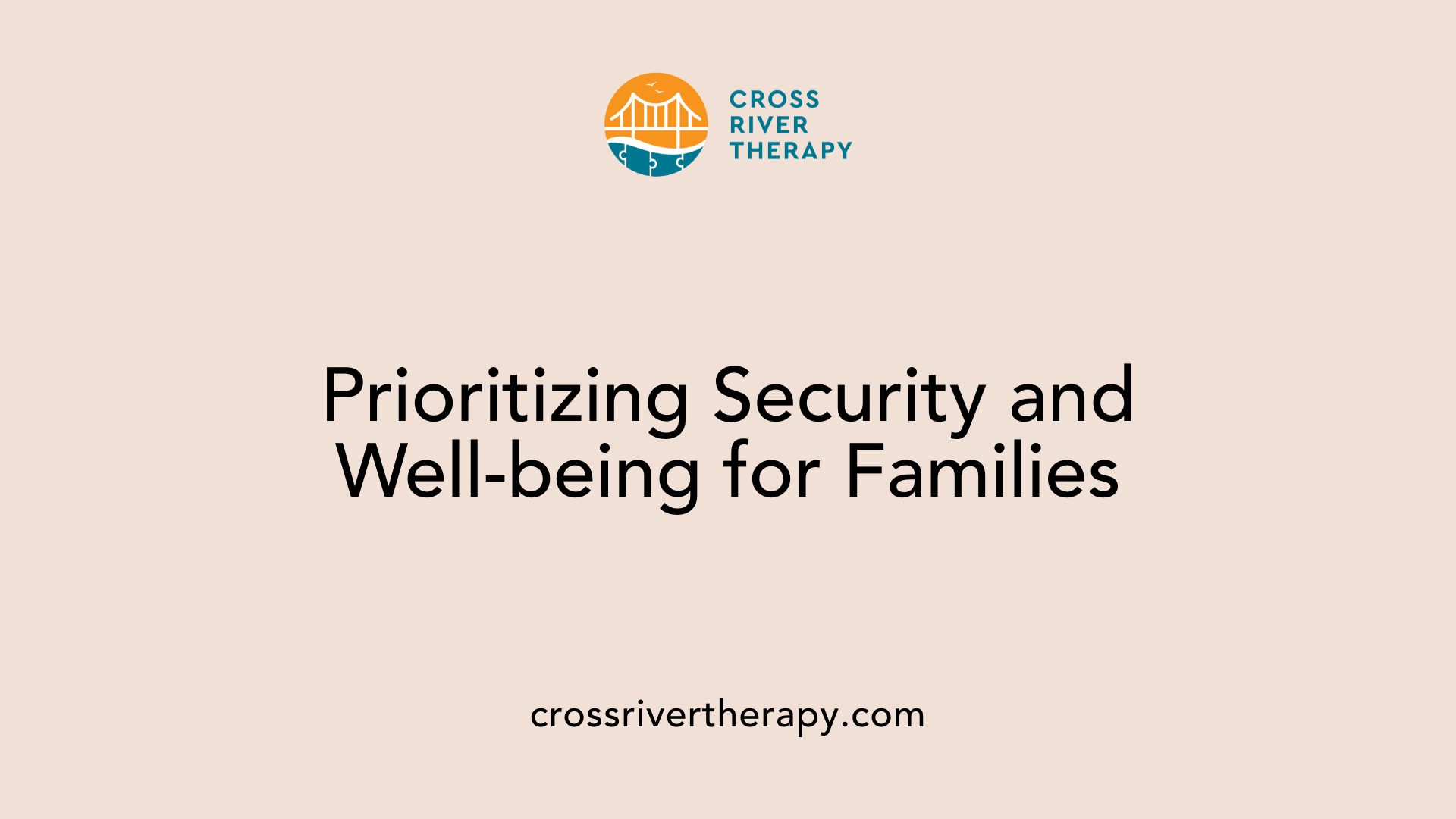Green living spaces for autism families
Creating Sustainable and Supportive Homes for Autism Families
Introduction
The journey of creating green living spaces that cater specifically to autism families is essentially one of integration—melding the principles of sustainability with the unique needs of individuals on the autism spectrum. These spaces promise enhancements in emotional well-being by addressing sensory sensitivities and fostering community connections. With a growing awareness around the intersection of autism needs and eco-friendly design, this exploration reveals insights into designing, adapting, and living harmoniously within nurturing environments.
Understanding Sensory-Friendly Environments

What are sensory-friendly environments for individuals with autism?
Sensory-friendly environments for individuals with autism are specifically crafted spaces tailored to meet unique sensory sensitivities. These areas aim to promote comfort and calm by utilizing thoughtful design elements that reduce overwhelming stimuli. Common features include:
- Quiet Zones: Areas designed to minimize noise, helping individuals to focus and relax.
- Calming Colors: Soft, neutral colors like pastels or muted tones create a soothing visual landscape, reducing overstimulation.
- Adjustable Lighting: Natural light combined with modifiable artificial lighting allows for an ambiance that can be easily controlled.
Key design elements in creating these spaces
Implementing specific design elements can greatly enhance the comfort of autistic individuals:
- Textured Surfaces: Varied textures in materials can provide a comforting tactile experience.
- Acoustic Features: Soundproofing materials such as acoustic panels can help manage noise levels, supporting a serene environment.
- Natural Elements: Including plants or natural views promotes emotional well-being and connection to nature.
Creating a calming environment
The objective of a sensory-friendly space is to foster relaxation and emotional stability. Integrating features such as weighted blankets, sensory toys, and calming sounds can further assist in managing sensory overload. Moreover, organizing spaces to eliminate clutter reduces anxiety and ensures smoother navigation for individuals within these environments. Ultimately, by considering these principles, caregivers can create supportive living arrangements that significantly enhance the quality of life for those on the autism spectrum.
Designing Autism-Friendly Homes

How can you make your home autism-friendly?
Making your home autism-friendly involves several thoughtful design modifications that cater to the unique sensory needs of individuals on the spectrum. Here are some suggestions:
Use calming colors
Opt for light blues, greens, and other neutral tones to create an inviting and stress-reducing atmosphere. Avoid bright primary colors that may lead to overstimulation.Incorporate soft surfaces
Select carpets, rugs, and upholstered furniture to help absorb sound, thereby reducing noise echoes which can be distracting or overwhelming.Create dedicated spaces
Designate specific areas for different activities. For instance, a playroom tailored to your child's interests allows them to engage freely, while having a kitchen space can help develop cooking skills together.Calm bedroom environment
Ensure that your child's bedroom is a serene retreat. Limiting visual clutter and using calming elements like weighted blankets can support relaxation and help with sleep.Prioritize safety
Implement structural changes like installing gates to prevent wandering and remove sharp-edged furniture to minimize the risk of accidents. Adding secure locks and alarms also enhances safety.Promote accessibility and independence
Ensure that pathways are clear and that essential items are within reach to encourage independence. Easily accessible storage solutions can help minimize clutter.Collaborate with professionals
Work with your child's therapists or clinicians to adapt spaces as their needs change, ensuring that your home remains a supportive environment for their development.
By thoughtfully addressing sensory sensitivities, safety, and accessibility, you can create a nurturing and empowering living space for individuals on the autism spectrum.
Home Modifications for Autism

What are potential home modifications for enhancing a living space for individuals with autism?
Home modifications play a crucial role in creating supportive environments for individuals with autism. By focusing on sensory-friendly design, these enhancements can significantly improve emotional well-being. Here are some effective modifications:
Lighting Adjustments:
- Installing dimmer switches allows for softer lighting options.
- Using warm LED bulbs reduces harsh illumination, creating a calming atmosphere.
Soundproofing Techniques:
- Implementing acoustic panels and solid core doors can help minimize external noise, which is vital for reducing sensory overload.
Creating Zoning Areas:
- Designing distinct areas or "pods" for different activities can foster smoother transitions, aiding in focus and relaxation.
Calming Color Schemes:
- Utilizing soft colors like pastel greens and blues on walls promotes relaxation and reduces visual overstimulation.
Safety Modifications:
- Adding non-slip mats in high-traffic areas helps prevent falls.
- Installing safety locks on doors and windows ensures security, catering to individuals who may wander.
Technology Integration:
- Utilizing smart home devices can enhance communication and manage daily routines, providing additional support for navigating household tasks.
Overall, these modifications aim to enhance the quality of life for individuals with autism by providing a nurturing and secure living environment.
Creating Quiet Spaces for Individuals with Autism
What considerations should be made for creating a quiet space for individuals with autism?
Creating a quiet space for individuals with autism involves several important considerations to ensure it meets their sensory needs. The first step is to establish an environment that prioritizes sound reduction and visual clarity.
- Soft, Calming Lighting: Utilize adjustable LED lighting to avoid harsh bright lights, which can be overstimulating. Natural light through well-placed windows can also improve mood and provide a comforting ambiance.
- Noise Management: Implement soundproofing materials such as acoustic panels, which help minimize distracting sounds. Including soothing background options like white noise machines or soft music can offer significant comfort.
In addition to these environmental modifications, sensory tools are essential. Here are a few:
- Weighted Blankets: Provide calming pressure for many individuals on the spectrum.
- Tactile Pillows: Offer various textures which can enhance sensory engagement and comfort.
- Noise-Canceling Headphones: Help individuals manage overwhelming auditory stimuli effectively.
Environmental Organization
A well-organized environment can lessen distractions and promote tranquility. Making use of clear storage solutions keeps spaces uncluttered. Visual prompts, such as color-coded bins, can guide individuals in finding and replacing items. Personalization is also crucial; allowing individuals to customize elements of the space—like sensory walls with preferred materials—can create a welcome retreat.
By considering these design elements, incorporating sensory tools, and organizing the environment, quiet spaces can become nurturing havens that encourage relaxation and reduce stress for individuals with autism.
Incorporating Nature and Eco-Friendly Materials
Benefits of Natural Elements
Natural elements play a crucial role in enhancing the well-being of families with autistic members. Incorporating features like gardens, plants, and natural light can significantly contribute to a calming atmosphere. For example, sunlight improves mood and stability, while greenery can reduce anxiety levels.
Visual clarity and an organized environment also comfort autistic individuals, reducing feelings of overwhelm and promoting a sense of peace.
Eco-Friendly Materials
Using non-toxic, eco-friendly materials in homes is essential for creating safe spaces. Materials that promote good indoor air quality, like natural wood and low-VOC paints, are significant. They reduce sensitivities many autistic individuals face towards chemicals.
Soft, natural finishes and textures can also enhance tactile experiences for autistic family members, adding to the comforting aspect of their environment.
Enhancing Sensory Experiences
Sensory experiences are fundamental in autism-friendly design. Features like calming color palettes, soft lighting, and varied textures can make a space feel secure and inviting.
The integration of elements such as soothing water sounds from small fountains can heighten relaxation.
With careful consideration of eco-friendly materials and nature's incorporation, homes can create a structured and peaceful sanctuary for families with autistic members, allowing for a better quality of life.
| Feature | Benefit | Example |
|---|---|---|
| Natural Light | Reduces sensory overload | Large windows with adjustable coverings |
| Eco-Friendly Materials | Promotes health and reduces sensitivity | Low-VOC paints, natural wood furniture |
| Calming Colors | Creates a soothing environment | Soft blues and greens |
| Sensory Textures | Engages touch and comfort | Varied fabric cushions and soft rugs |
By adopting these elements, families can design homes that prioritally support the emotional and sensory needs of individuals with autism.
Impact of Renewable Energy Solutions
How do renewable energy solutions impact living conditions for households with autistic individuals?
Renewable energy solutions significantly enhance the living conditions for households with autistic individuals by creating stable and manageable home environments. For instance, energy-efficient lighting, such as LED systems, minimizes flickering, which can be distressing for those with sensory sensitivities.
Sensory Considerations
Furthermore, renewable energy technologies contribute to a quieter home environment as they reduce noise pollution, which is crucial for individuals on the autism spectrum. This quieter atmosphere supports emotional well-being, helping to minimize sensory overload. Homes integrated with these technologies can be designed with sensory-friendly features, including organized spaces, controlled lighting, and calming colors.
Environmental Benefits
The integration of renewable energy also leads to enhanced air quality by reducing harmful emissions, further benefiting individuals with autism who may be sensitive to environmental pollutants. Overall, implementing renewable energy solutions tailored to sensory considerations can foster a comforting environment, promoting well-being and stability for households with autistic individuals.
Emotional and Social Benefits of Green Spaces
What are the emotional and social impacts of green living spaces on families with autism?
Green living spaces have profound emotional and social benefits for families with autism. These environments serve as calming oases, significantly reducing stress and anxiety levels. They enable families to foster resilience and emotional well-being, particularly for individuals on the autism spectrum, who may experience heightened sensitivities to their surroundings.
Social interactions flourish in these green spaces, breaking the cycle of isolation often felt by families. When families engage in outdoor activities, they not only strengthen familial bonds but also build connections with others in their community. This sense of community is crucial as it helps families feel supported and understood, alleviating loneliness.
The emphasis on sensory-friendly designs—such as incorporating natural materials, calming colors, and varied textures—creates enriching experiences for autistic individuals. Research indicates that exposure to nature leads to decreased symptoms of depression and anxiety, enhancing mental health for all family members. Moreover, the presence of natural elements promotes joy and promotes a sense of belonging, fostering emotional stability.
Overall, green living spaces empower families affected by autism, ensuring a nurturing environment that supports both emotional health and social development. These spaces underline the importance of creating vibrant community interactions and emotional resilience, laying the groundwork for a brighter future.
Sensory-Friendly Design Elements in Green Living Spaces
Biophilic Design
Biophilic design incorporates natural elements into living spaces, which can enhance emotional well-being for individuals with autism. Features such as plants, natural light, and textures create a soothing atmosphere, promoting relaxation and reducing stress. Integrating gardens or green roofs can also provide therapeutic benefits, helping to foster emotional connections for residents.
Lighting and Soundproofing
Effective lighting is crucial in autism-friendly designs. Utilizing adjustable lighting fixtures allows families to control light levels, reducing sensory overload. Moreover, soundproofing techniques, such as solid core doors and acoustic panels, help manage noise levels, creating a quieter and calmer environment. This minimizes distractions and supports focus, essential for those sensitive to auditory inputs.
Natural Elements
Incorporating materials with calming colors, such as soft blues and greens, can significantly impact an individual's comfort. Choosing non-toxic finishes and materials improves indoor air quality, which is vital for individuals with autism. Additionally, elements like varied textures in furnishings and decor offer tactile stimulation without overwhelming the senses, aligning with sensory-friendly principles.
Safety and Comfort in Autism-Friendly Homes

Secure Environments
Creating secure environments is paramount in autism-friendly homes, where individuals may be prone to wandering or experiencing anxiety. Utilizing robust locking mechanisms on doors and windows can prevent unauthorized access and provide peace of mind for families. Fencing around yards can also add an extra layer of security, ensuring that individuals remain safe while engaging with outdoor spaces.
Safety Features
Incorporating essential safety features such as alarms and monitoring systems can significantly enhance the safety of individuals with autism. Sound-absorbing materials can reduce auditory distractions, while the use of rounded furniture edges minimizes accidental injuries. Additionally, non-slip flooring helps prevent falls, allowing for safer navigation throughout the home.
Comfort Improvements
To bolster comfort, the use of soft colors like beige and pastel hues aids in reducing sensory overload. By maximizing natural light through adequate window adjustments, homes can maintain a calming ambiance. Configurable smart home systems can regulate lighting and temperature to meet individual preferences, supporting not only comfort but also emotional well-being. These modifications collectively create a nurturing and supportive space for those on the autism spectrum.
Sustainable Practices for Autism Families

Energy Efficiency
Energy-efficient homes for families with autism are crucial for enhancing comfort and reducing utility costs. Smart thermostats and energy-efficient appliances help maintain a stable indoor climate, which is essential for minimizing sensory overload. Implementing practices such as LED lighting and in-floor radiant heating ensures an environment that is calm and conducive to well-being, especially for sensory-sensitive individuals.
Sustainable Materials
The selection of non-toxic and eco-friendly materials is essential in creating safe living spaces for individuals with autism. Using materials like low-VOC paints and natural fiber carpets enhances indoor air quality, which is particularly beneficial for those sensitive to pollutants. Features such as wood finishes and low-arousal colors promote a peaceful atmosphere, contributing to emotional stability.
Smart Home Technologies
Integrating smart home technologies can significantly improve the quality of life for autism families. Customizable lighting systems and soundproofing solutions provide the ability to tailor environments to individual sensory needs, thereby reducing anxiety. These innovations not only foster a sense of safety and comfort but also streamline daily activities and routines, enhancing overall family harmony.
| Topics | Key Features | Benefits |
|---|---|---|
| Energy Efficiency | Smart thermostats, LED lighting, energy-efficient appliances | Lower utility costs, stable climate |
| Sustainable Materials | Non-toxic paints, natural fibers, low-VOC options | Improved air quality, reduced stress |
| Smart Home Technologies | Customizable systems, soundproofing | Tailored environments, enhanced safety |
Community Engagement and Support Networks
Community Building
Engaging with the community is essential for developing environments that cater to the unique needs of autism families. By fostering connections among families, local organizations, and autism advocates, communities can create a support system that shares resources, knowledge, and experiences. This network can enhance the overall emotional well-being of autism families by offering a sense of belonging.
Supportive Environments
Creating supportive environments involves understanding the specific challenges faced by autism families. By emphasizing inclusivity in public spaces and establishing programs that raise awareness about autism, communities can lay the groundwork for safe and inviting surroundings. This effort can include training local staff in autism awareness and advocating for greater accessibility in parks and recreational areas.
Collaborative Design Efforts
Collaborative design initiatives are vital in crafting autism-friendly living spaces. Architects, environmentalists, and autism advocates must work together to implement sensory-friendly designs that prioritize safety, comfort, and community cohesion. For example, community gardens or outdoor spaces designed with calming elements can help families feel more connected while providing a therapeutic environment.
| Topic | Description | Effective Practices |
|---|---|---|
| Community Building | Creating networks among autism families to share resources | Support groups, local events |
| Supportive Environments | Enhancing accessibility and inclusivity | Autism awareness training, accessible public facilities |
| Collaborative Design | Working together on auditory and visual features supportive to autism | Community gardens, sensory-friendly parks |
Conclusion
Crafting green living spaces for autism families is not just about meeting sensory needs, but also about fostering environments that promote sustainability and community engagement. These spaces serve as sanctuaries designed to optimize safety, comfort, and emotional well-being, ultimately supporting the unique needs of individuals on the autism spectrum. As awareness continues to grow, integrating these design principles within our homes becomes a shared journey towards a more inclusive and sustainable future.
References
Table of Contents
- Understanding Sensory-Friendly Environments
- Designing Autism-Friendly Homes
- Home Modifications for Autism
- Creating Quiet Spaces for Individuals with Autism
- Incorporating Nature and Eco-Friendly Materials
- Impact of Renewable Energy Solutions
- Emotional and Social Benefits of Green Spaces
- Sensory-Friendly Design Elements in Green Living Spaces
- Safety and Comfort in Autism-Friendly Homes
- Sustainable Practices for Autism Families
- Community Engagement and Support Networks
- Conclusion
- References



